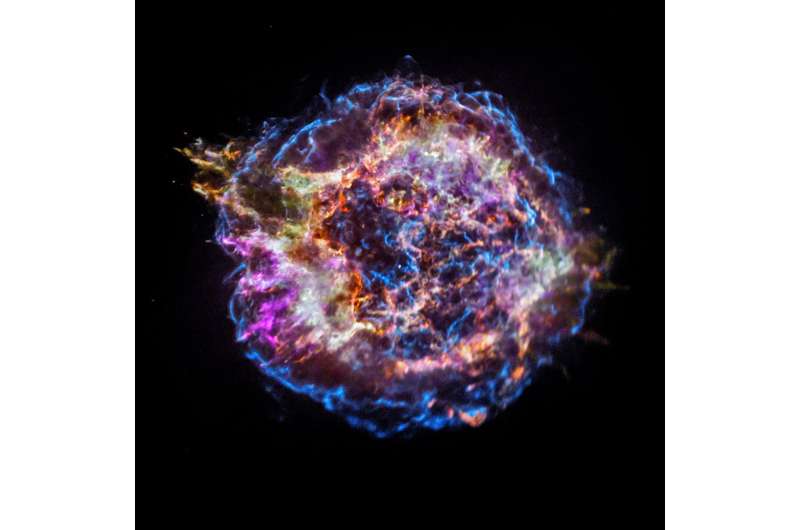NASA launches X-ray telescope on sounding rocket to study star wreckage

NASA launched a prototype telescope and instrument to observe the X-rays emitted by Cassiopeia A, the expanding debris of an exploded star. The High-Resolution Microcalorimeter X-ray Imaging Rocket (Micro-X) launched July 22 aboard a sub-orbital launch vehicle called a sounding rocket and successfully tested its detector technology.
"The flight time of a sounding rocket is short compared to orbiting satellites, so you have to get as much light as you can to do the science you want," said Principal Investigator Enectali Figueroa-Feliciano, an associate professor of physics at Northwestern University in Evanston, Illinois. "There are only a couple of X-ray sources in the sky that are bright enough for the few minutes of observation time such flights give us, and Cassiopeia A is one of the brightest. Our study will build on the current knowledge of supernova remnants, how they exploded and evolve, and we will get new insights into the history of Cassiopeia A."
Launched from the U.S. Army's White Sands Missile Range in New Mexico, Micro-X soared to an altitude of 100 miles (160 kilometers)—required to detect X-rays that are absorbed by Earth's atmosphere—and observed the remnant for the next five minutes. At its pinnacle Micro-X reached an altitude of 167 miles (270 kilometers).
The mission incorporates the first array of transition-edge sensor X-ray microcalorimeters to fly into space. These sensors act as highly sensitive thermometers and make ideal detectors for an X-ray telescope.
The microcalorimeter is comprised of three main parts: an absorber which takes in light and converts it to heat, a thermistor that alters its own resistance due to changing temperature and a heat sink that cools the microcalorimeter back down.
For Micro-X, a refrigerator cools the detector to about 459 degrees below zero Fahrenheit (0.075 degree Celsius above absolute zero), or nearly the minimum temperature possible. When the instrument detects X-rays, the light's energy is converted into heat. This causes a slight rise in temperature, prompting the refrigerator to cool the detector back to its original temperature. The energy of each X-ray can be determined from the change in temperature.
One of the many questions that scientists are interested in using the data to answer is whether or not the temperatures of the gases ejected from the star's explosion are the same for iron and silicon, two elements which were previously measured by NASA's Chandra X-ray Observatory. Such an analysis was not possible with Chandra's spectrometers.
"With Chandra, different regions of the supernova remnant overlap in the spectrometer," said F. Scott Porter, an astrophysicist at NASA's Goddard Space Flight Center in Greenbelt, Maryland, who is participating in the mission. "Micro-X is different because it can take every single photon in its field of view, tell the exact energy and make a spectrum."
The information collected by Micro-X will also be used to help answer the question of how much oxygen resides in Cassiopeia A, create a survey of the various other elements in the remnant and measure the speed of the ring-like ejecta from the exploded star.
One aspect of research that was not possible before Micro-X was the measurement of weak spectral lines. These observations will now tell scientists which gases are present as well as their speed and direction. This is possible because light from sources moving toward or away from us causes a shift in wavelength depending on their speed, a phenomenon known as the Doppler shift.
Both the mission of Micro-X and the utilization of transition-edge sensors will continue in the future. The Micro-X team plans to direct their attention to other cosmic objects. "In future flights we can look at other sources like other supernova remnants or clusters of galaxies," said Figueroa-Feliciano. "We have even thought about using this type of rocket to look for dark matter."
Transition-edge sensors will also be incorporated in upcoming orbital missions. ESA's (European Space Agency) Advanced Telescope for High Energy Astrophysics (ATHENA), planned for launch in the early 2030s, will wield an array of about 5,000 pixels, nearly 40 times the size of Micro-X's 128-pixel detector. ATHENA will study hot gas structures—such as groups of galaxies—and conduct a census of black holes.
Provided by NASA





















